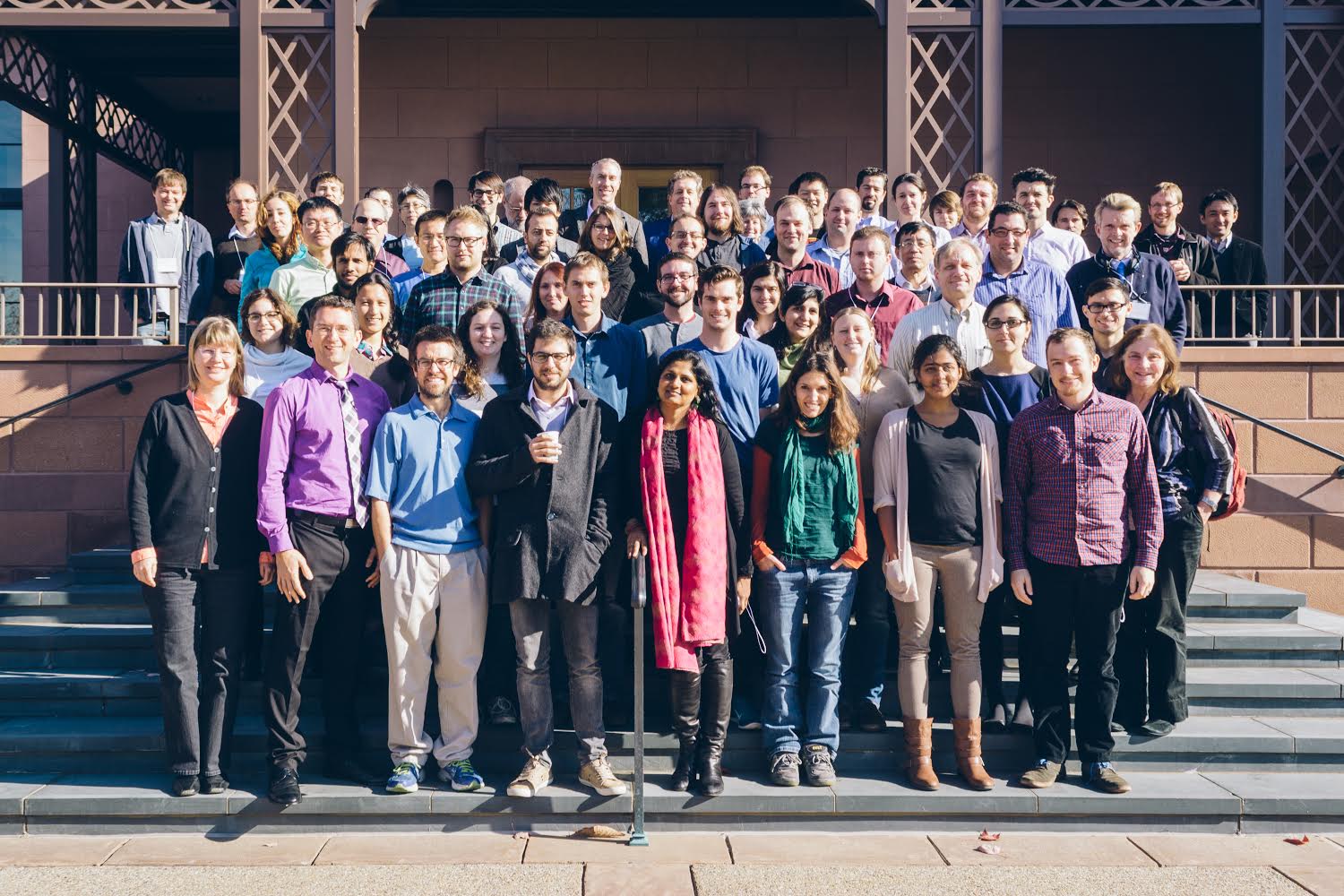A year after the launch of the Hubble Frontier Fields, my supervisor Priya Natarajan and Dan Coe at the Space Telescope Institute (STScI) in Baltimore put together the first science meeting of the sizable collaboration. Celebrity attendants included Matt Mountain, Director of STScI, Mark Postman, PI of the Cluster Lensing And Supernova survey with Hubble (CLASH) mission and Neta Bahcall – professor at Princeton, long-time project leader at STScI and general cosmology legend.

YFF 2014
Most of the presentations are available here. Talks fell broadly into three categories:
- Observations with the Hubble Frontier Fields, i.e. studies of the baryonic physics of galaxies and galaxy clusters. These were often combined with observations in the X-ray from Chandra and in the infrared from Subaru, as also with spectroscopy from MUSE (which was a source of much excitement). These were used to probe the faint end of various mass and luminosity functions, as well as high-redshift objects which were magnified by the cluster lenses.
- Lensing reconstructions of the substructure of the HFF clusters (the project currently targets six clusters and six parallel fields), i.e. studies of large-scale structure and tests of cosmological models. Combined strong and weak lensing maps have been completed for Abell 2744 using parametric as well as free-form lensing models; MACS 0416 has been modeled using strong-only constraints under the same two schemes. I got to plot these results against the demographics of the Illustris universe, an exciting result which should make it to paper form within a couple months. A bit more on my favourite talk in this category below.
- Panels on the history and direction of large observation projects, i.e. how to do science. Gus Evrard in particular spoke to my heart when arguing for the importance of accessible simulations and their application in identifying systematic errors in various observation schemes. Incidentally, the Illustris Project has just released its first virtual observatory!!! We just may have convinced the admin folk at STScI of the necessity for many more funds in the area of computation to correctly interpret the observations from the massive surveys of this age – the recently completed SDSS and DES, the ongoing HFF and of course the upcoming mammoth that is the JWST.
The highlight for me was definitely Massimo Meneghetti’s closing talk describing a lensing method comparison project. Massimo works at the Bologna Lens Factory (BLF), commissioned by ESA’s Euclid mission to generate a suite of simulated galaxies and clusters against which to test lensing reconstruction tools. An ongoing project has been asking various teams to reconstruct the dark matter substructure in two simulated clusters from BLF, and comparing them to the known, true configuration. A joint paper summarizing the systematics of various methods should be out sometime over the next year as people tweak their models to their satisfaction.
All in all, epic time 🙂 It was pretty amazing to see such genuine curiosity and generous sharing of data and methods. Coming from a background primarily in theory, I used to think of error bars as a painful formality – but the statistical tests of cosmological models we and others performed and presented last week have got me positively nerding out about these. Good science should know exactly what it doesn’t know as well as what it does.
To collaboration and humility! And funding for theory.